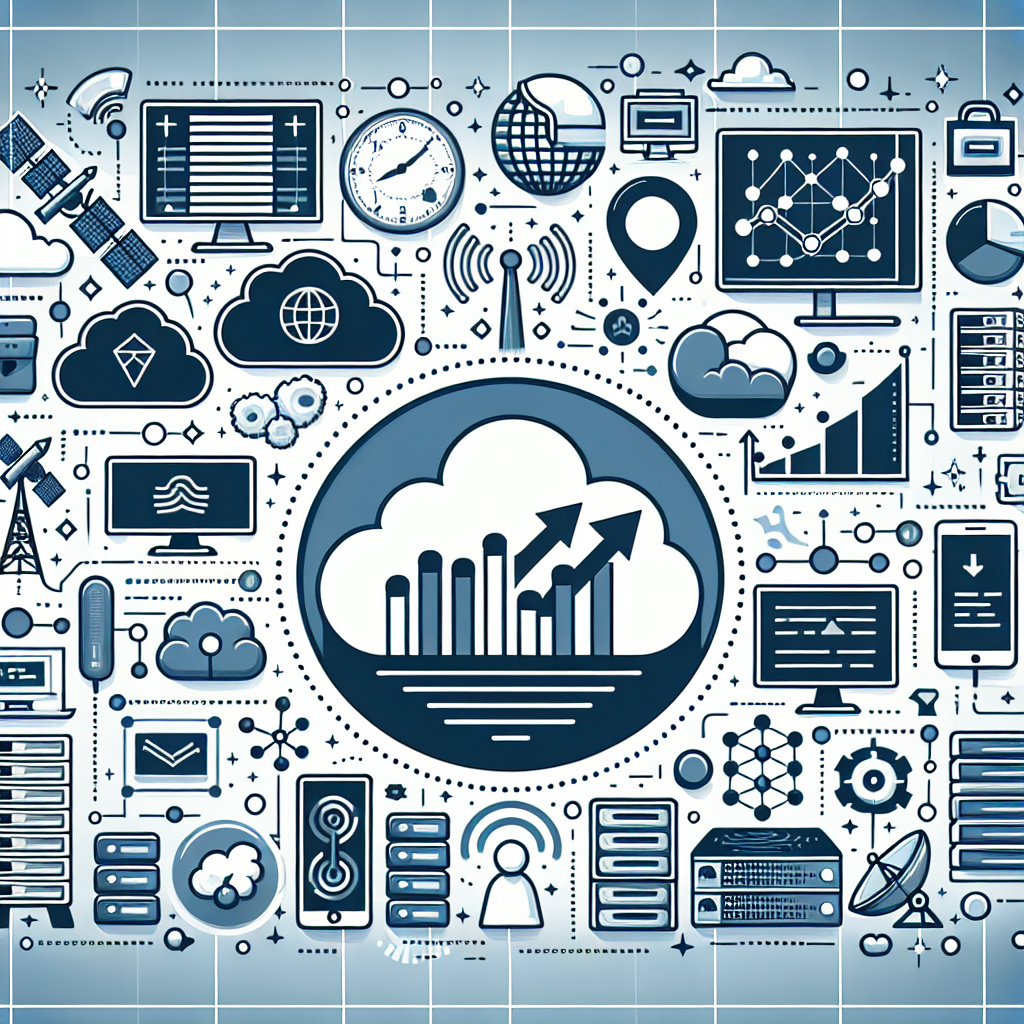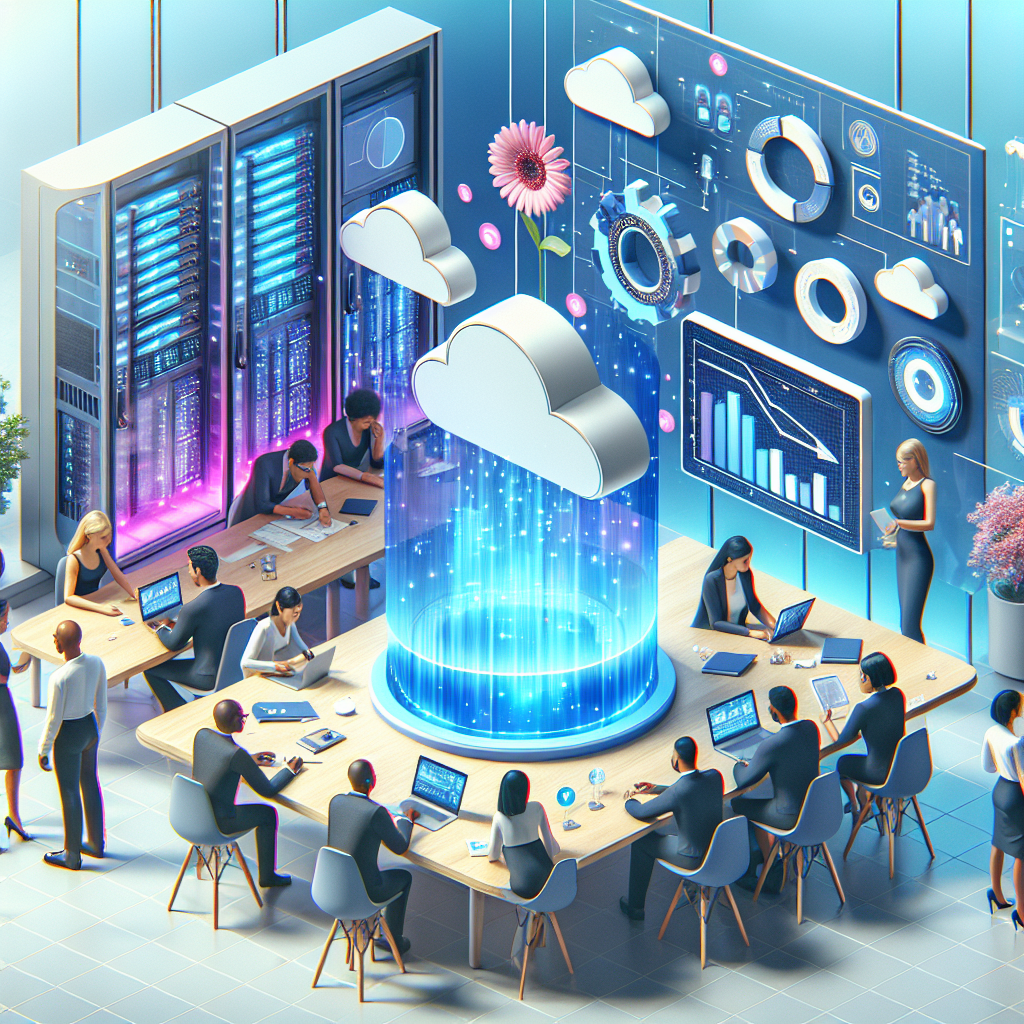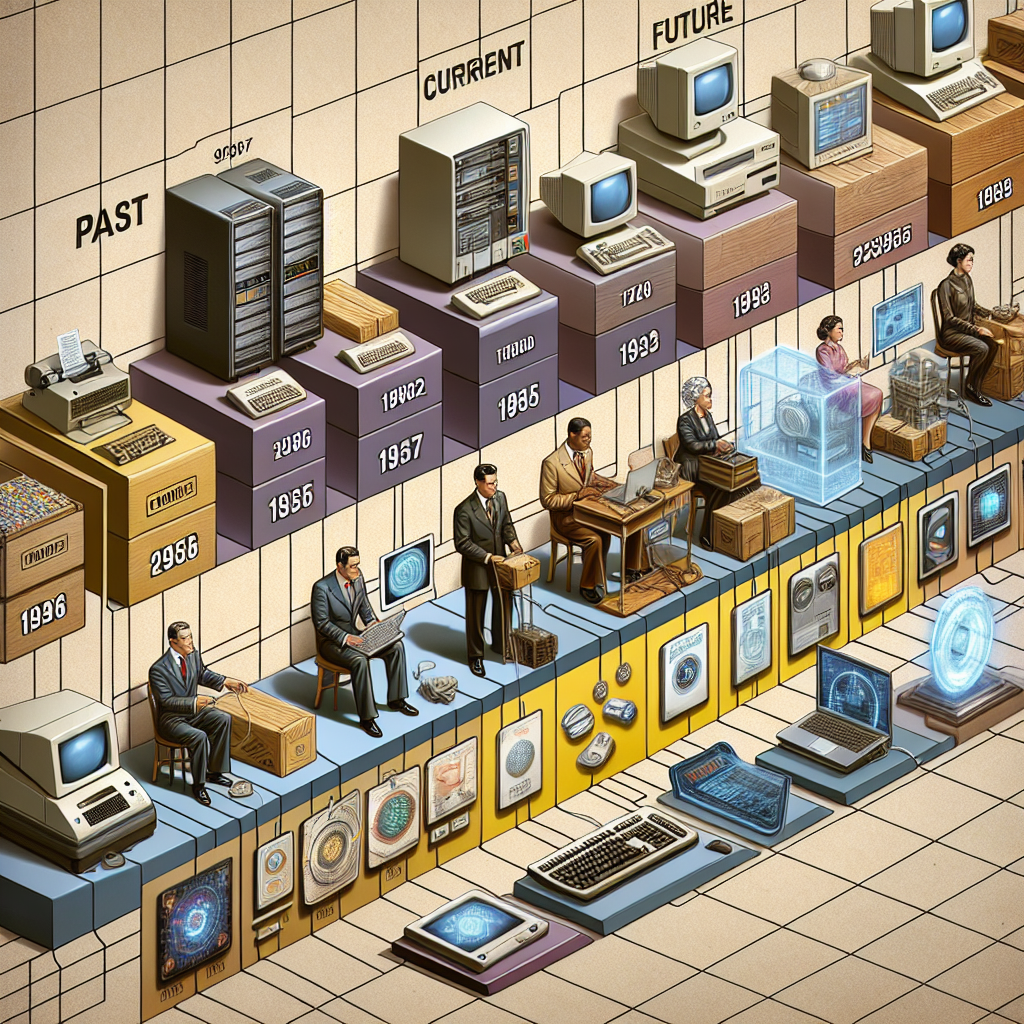Your cart is currently empty!
Tag: Industry

The Top Trends in Managed Service Provider Industry
The managed service provider (MSP) industry is constantly evolving, with new trends and technologies shaping the way businesses manage their IT infrastructure. As businesses continue to rely on technology for their day-to-day operations, MSPs play a crucial role in providing the necessary support and services to keep their clients’ systems running smoothly.Here are some of the top trends in the MSP industry that are shaping the way businesses approach IT management:
1. Cloud-based services: Cloud computing has revolutionized the way businesses store, access, and manage their data. MSPs are increasingly offering cloud-based services to their clients, allowing them to access their data and applications from anywhere, at any time. This trend is expected to continue as more businesses look to move their operations to the cloud for increased scalability, flexibility, and cost savings.
2. Cybersecurity: With the rise of cyber threats and data breaches, cybersecurity has become a top priority for businesses of all sizes. MSPs are now offering a range of cybersecurity services, such as threat detection, data encryption, and security monitoring, to help businesses protect their sensitive information. As cyber threats continue to evolve, MSPs will play a crucial role in helping businesses stay one step ahead of cybercriminals.
3. Artificial intelligence and automation: Artificial intelligence (AI) and automation are revolutionizing the MSP industry, allowing businesses to streamline their IT operations and improve efficiency. MSPs are leveraging AI-powered tools and automation technologies to monitor systems, identify issues, and perform routine maintenance tasks, reducing the need for manual intervention and minimizing downtime.
4. Managed network services: As businesses increasingly rely on their network infrastructure to support their operations, MSPs are expanding their services to include managed network services. These services help businesses optimize their network performance, improve connectivity, and ensure data security. MSPs are also offering network monitoring and management services to help businesses proactively identify and address potential issues before they impact operations.
5. Customer experience: In today’s competitive business landscape, customer experience is more important than ever. MSPs are focusing on providing exceptional customer service and support to differentiate themselves from their competitors. By offering personalized solutions, proactive monitoring, and timely responses to client inquiries, MSPs can build strong, long-lasting relationships with their clients and earn their trust.
Overall, the MSP industry is constantly evolving to meet the changing needs of businesses in today’s digital age. By staying ahead of the latest trends and technologies, MSPs can continue to provide valuable services to their clients and help them navigate the complexities of IT management. As businesses continue to rely on technology for their operations, MSPs will play a crucial role in ensuring their success in the digital world.

The Future of IT: How MSPs Are Shaping the Industry
As technology continues to advance at a rapid pace, the role of Managed Service Providers (MSPs) in the IT industry is becoming increasingly important. MSPs are companies that provide outsourced IT services to businesses, including network monitoring, security, data backup, and more. These services help businesses to streamline their IT operations, improve efficiency, and reduce costs.The future of IT is being shaped by MSPs in a number of ways. One of the key trends driving this change is the shift towards cloud computing. Cloud technology allows businesses to access IT resources and services over the internet, rather than having to maintain their own hardware and software infrastructure. MSPs are helping businesses to make the transition to the cloud by offering a range of cloud-based services, such as hosted applications, virtual desktops, and data storage solutions.
Another important trend in the IT industry is the increasing focus on cybersecurity. With cyber threats on the rise, businesses are looking for ways to protect their data and systems from attacks. MSPs are playing a crucial role in this area by offering security services such as firewall management, intrusion detection, and incident response. By partnering with an MSP, businesses can benefit from the expertise and resources needed to keep their IT systems secure.
In addition to cloud computing and cybersecurity, MSPs are also helping businesses to leverage emerging technologies such as artificial intelligence (AI) and the Internet of Things (IoT). These technologies have the potential to transform how businesses operate, allowing them to automate processes, make better decisions, and improve customer experiences. MSPs are working with businesses to implement AI and IoT solutions, helping them to stay ahead of the curve in a rapidly evolving digital landscape.
Overall, the future of IT is bright, thanks in large part to the innovative solutions and services being offered by MSPs. By partnering with an MSP, businesses can take advantage of the latest technologies, improve their IT infrastructure, and drive growth and success in the digital age. As technology continues to evolve, MSPs will play an increasingly important role in shaping the IT industry and helping businesses to thrive in an ever-changing world.

The Future of IT Consulting: Adapting to Changing Industry Dynamics
The IT consulting industry is constantly evolving, and with the rapid pace of technological advancements, consultants must be prepared to adapt to changing industry dynamics in order to stay relevant and competitive in the marketplace.One of the key trends shaping the future of IT consulting is the increasing demand for specialized expertise in emerging technologies such as artificial intelligence, machine learning, blockchain, and cybersecurity. As organizations continue to invest in digital transformation initiatives, they are looking for consultants who can help them navigate the complexities of implementing and integrating these cutting-edge technologies into their operations.
Another important factor driving change in the IT consulting industry is the shift towards cloud computing and software as a service (SaaS) solutions. With more businesses moving their IT infrastructure to the cloud, consultants must be well-versed in cloud migration strategies, security protocols, and best practices for optimizing cloud-based applications and services.
Furthermore, the rise of remote work and virtual collaboration tools has also had a significant impact on the way IT consulting firms operate. Consultants must now be adept at conducting virtual meetings, delivering remote training sessions, and providing support to clients across different time zones and geographies.
In order to thrive in this rapidly changing landscape, IT consulting firms must focus on building a diverse and multidisciplinary team of consultants with a wide range of skills and expertise. This may involve hiring specialists in specific technology domains, developing partnerships with niche service providers, or investing in training and upskilling programs for existing staff.
Additionally, consultants must be proactive in staying abreast of industry trends, attending conferences, participating in professional development programs, and networking with peers to exchange knowledge and insights. By continuously learning and adapting to new technologies and market demands, IT consulting firms can position themselves as trusted advisors and strategic partners to their clients.
In conclusion, the future of IT consulting lies in the ability to adapt to changing industry dynamics and embrace new technologies and business models. By staying ahead of the curve and continuously evolving their skills and expertise, consultants can remain competitive and deliver value to their clients in an ever-changing digital landscape.

How Remote Monitoring is Transforming the Energy Industry
The energy industry is constantly evolving, with new technologies and innovations driving change at a rapid pace. One of the most significant developments in recent years has been the adoption of remote monitoring systems, which are transforming the way energy companies operate and manage their assets.Remote monitoring involves the use of sensors, cameras, and other devices to collect real-time data from energy infrastructure such as power plants, substations, and transmission lines. This data is then transmitted to a central control center where it can be analyzed and used to make informed decisions about maintenance, repairs, and overall efficiency.
One of the key benefits of remote monitoring is its ability to provide early warning of potential issues before they escalate into costly problems. For example, sensors can detect abnormal vibrations in a turbine or transformer, allowing technicians to address the issue before it leads to a breakdown. This proactive approach to maintenance not only reduces downtime and repair costs but also helps to extend the lifespan of equipment.
Remote monitoring also enables energy companies to optimize their operations by providing real-time insights into energy consumption, production levels, and grid performance. By analyzing this data, companies can identify inefficiencies and implement measures to improve overall performance and reduce costs. For example, by adjusting the output of a power plant based on demand fluctuations, companies can reduce fuel consumption and lower emissions.
In addition to improving operational efficiency, remote monitoring can also enhance safety and security in the energy industry. For example, cameras and sensors can be used to monitor remote sites for unauthorized access or potential hazards, allowing companies to respond quickly to any threats. This technology can also help to prevent accidents by providing early warning of dangerous conditions, such as leaks or fires.
Overall, remote monitoring is revolutionizing the energy industry by providing companies with the tools they need to operate more efficiently, safely, and sustainably. By harnessing the power of real-time data and analytics, energy companies can improve asset management, reduce downtime, and optimize performance, ultimately leading to a more reliable and resilient energy infrastructure. As technology continues to advance, the possibilities for remote monitoring in the energy industry are endless, and companies that embrace this technology will be well-positioned to thrive in the future.

Choosing the Best Managed Service Provider for Your Industry
In today’s fast-paced business world, staying ahead of the competition requires more than just having a great product or service. It also means having a reliable and efficient IT infrastructure in place to support your operations. For many companies, this means partnering with a managed service provider (MSP) to handle their IT needs.Choosing the right MSP for your industry is crucial to the success of your business. With so many options available, it can be overwhelming to sift through the choices and find the one that will best meet your needs. Here are some key factors to consider when selecting an MSP for your industry:
1. Industry Experience: One of the most important factors to consider when choosing an MSP is their experience in your specific industry. Look for a provider that has a track record of working with companies in your sector and understands the unique challenges and requirements that come with it.
2. Services Offered: Different MSPs offer different services, so it’s important to assess your needs and find a provider that offers the services that are most relevant to your business. Some common services provided by MSPs include network monitoring, data backup and recovery, cloud services, and cybersecurity.
3. Scalability: As your business grows, your IT needs will also evolve. Make sure the MSP you choose has the capacity to scale their services to accommodate your growth. This includes the ability to quickly add or remove users, upgrade hardware and software, and adjust service levels as needed.
4. Security Measures: With cyber threats on the rise, security is a top concern for businesses of all sizes. Look for an MSP that has robust security measures in place to protect your data and systems from potential breaches. This includes regular security audits, encryption protocols, and employee training on cybersecurity best practices.
5. Customer Support: When something goes wrong with your IT systems, you need a provider that is responsive and reliable. Look for an MSP that offers 24/7 customer support and has a track record of quickly resolving issues. A good provider will also proactively monitor your systems to identify and address potential problems before they escalate.
In conclusion, choosing the best managed service provider for your industry is a critical decision that can have a significant impact on the success of your business. By considering factors such as industry experience, services offered, scalability, security measures, and customer support, you can find a provider that will help you stay ahead of the competition and achieve your business goals.

Cybersecurity Risks and Challenges in the Healthcare Industry
Cybersecurity Risks and Challenges in the Healthcare IndustryIn recent years, the healthcare industry has become a prime target for cyberattacks due to the vast amounts of sensitive data it holds. From patient records to financial information, healthcare organizations are a goldmine for cybercriminals looking to profit from stolen data. As a result, cybersecurity risks and challenges in the healthcare industry have become a major concern for both providers and patients.
One of the biggest challenges facing the healthcare industry is the increasing sophistication of cyberattacks. Hackers are constantly developing new methods to breach security systems and access sensitive data. From ransomware attacks that lock healthcare organizations out of their systems until a ransom is paid, to phishing scams that trick employees into revealing login credentials, the threats facing the healthcare industry are constantly evolving.
Another major challenge is the sheer volume of data that healthcare organizations are responsible for protecting. With the rise of electronic health records and other digital systems, healthcare providers are now storing more data than ever before. This data includes not only medical records, but also financial information, insurance details, and more. Protecting this vast amount of data from cyberattacks requires robust security measures and constant vigilance.
Additionally, the healthcare industry faces unique challenges when it comes to cybersecurity. Unlike other industries, healthcare organizations must balance the need for security with the need for accessibility. Healthcare providers need to be able to access patient records quickly and easily in order to provide the best possible care. This can create vulnerabilities in security systems that hackers can exploit.
To address these challenges, healthcare organizations must invest in robust cybersecurity measures. This includes implementing encryption technologies to protect data both at rest and in transit, as well as multi-factor authentication to prevent unauthorized access to systems. Regular security audits and employee training are also essential to ensure that all staff members are aware of the risks and know how to respond to potential threats.
In conclusion, cybersecurity risks and challenges in the healthcare industry are a growing concern that must be addressed by providers, patients, and policymakers alike. By investing in robust security measures and staying vigilant against emerging threats, healthcare organizations can protect sensitive data and ensure the safety and privacy of their patients.

The Future of Service Level Agreements: Trends to Watch in the Industry
Service Level Agreements (SLAs) have long been a crucial aspect of the relationship between service providers and their customers. These agreements outline the level of service that the provider is expected to deliver, including metrics such as uptime, response times, and resolution times. However, as technology and customer expectations continue to evolve, the future of SLAs is also changing. Here are some key trends to watch in the industry:1. Outcome-based SLAs: Traditionally, SLAs have been focused on inputs, such as the availability of a service or the speed of response to a customer issue. However, there is a growing trend towards outcome-based SLAs, where the focus is on the actual results achieved by the service provider. This shift reflects a move towards a more customer-centric approach, where the emphasis is on delivering tangible business value rather than just meeting technical benchmarks.
2. Real-time monitoring and reporting: With the increasing complexity and interdependence of IT systems, there is a growing need for real-time monitoring and reporting to ensure that SLAs are being met. Service providers are investing in advanced monitoring tools that can provide real-time visibility into the performance of their services, allowing them to proactively identify and address issues before they impact the customer.
3. AI-driven SLAs: Artificial intelligence (AI) is revolutionizing the way SLAs are managed. AI-powered algorithms can analyze vast amounts of data to predict and prevent service disruptions, optimize resources, and improve the overall performance of IT services. By leveraging AI, service providers can enhance the accuracy and effectiveness of their SLAs, leading to better outcomes for customers.
4. Customized SLAs: One size does not fit all when it comes to SLAs. Customers have unique requirements and priorities, and service providers are increasingly offering customized SLAs to meet these specific needs. By tailoring SLAs to individual customers, service providers can ensure that they are delivering the level of service that is most important to each customer, leading to increased satisfaction and loyalty.
5. Collaboration and partnership: As IT environments become more complex and interconnected, service providers are recognizing the importance of collaboration and partnership in meeting SLA requirements. By working closely with customers, vendors, and other stakeholders, service providers can ensure that SLAs are realistic, achievable, and aligned with the broader business goals of all parties involved.
In conclusion, the future of SLAs is evolving to meet the changing needs and expectations of customers in a rapidly evolving technological landscape. By embracing outcome-based SLAs, investing in real-time monitoring and AI-driven solutions, offering customized agreements, and fostering collaboration and partnership, service providers can ensure that they are delivering the level of service that their customers expect and deserve. Keeping an eye on these trends will be crucial for staying ahead in the competitive service provider industry.

The Evolution of IT Consulting: How Technology is Changing the Industry
The field of IT consulting has evolved significantly over the years, thanks to advancements in technology that have fundamentally changed the way businesses operate. From the early days of basic computer programming to today’s sophisticated cloud computing and artificial intelligence solutions, IT consulting has become an essential service for companies looking to stay ahead in the digital age.In the past, IT consulting primarily involved helping businesses set up and maintain their computer systems, troubleshoot technical issues, and develop custom software solutions. However, as technology has become more complex and interconnected, the role of IT consultants has expanded to encompass a wide range of services, from cybersecurity and data analytics to digital transformation and cloud migration.
One of the biggest drivers of change in the IT consulting industry has been the rise of cloud computing. Cloud technology allows businesses to access computing resources and storage space over the internet, rather than relying on physical servers or hardware. This has revolutionized the way companies store, manage, and process data, making it easier and more cost-effective to scale their operations.
Another major trend shaping the IT consulting industry is the increasing focus on cybersecurity. With the rise of cyber threats such as ransomware, phishing attacks, and data breaches, businesses are investing more in measures to protect their sensitive information. IT consultants play a vital role in helping companies develop comprehensive cybersecurity strategies, implement the latest security tools and technologies, and respond quickly to any security incidents.
Artificial intelligence (AI) and machine learning are also transforming the IT consulting industry. These technologies enable businesses to automate repetitive tasks, analyze vast amounts of data, and make more informed decisions. IT consultants are helping companies leverage AI and machine learning to improve efficiency, reduce costs, and gain a competitive edge in their respective industries.
Overall, the evolution of IT consulting has been driven by the rapid pace of technological innovation and the increasing complexity of business operations. As companies continue to adopt new technologies and digital solutions, the demand for skilled IT consultants will only grow. By staying ahead of the curve and embracing the latest trends in technology, IT consulting firms can position themselves as trusted partners in helping businesses navigate the ever-changing digital landscape.

Cybersecurity in the Healthcare Industry: Challenges and Solutions
The healthcare industry is increasingly becoming a prime target for cyberattacks due to the vast amount of sensitive patient data stored in electronic health records. As the industry continues to digitize and connect medical devices to the internet, the need for robust cybersecurity measures has never been more critical.Challenges in Healthcare Cybersecurity:
1. Data breaches: Healthcare organizations are vulnerable to data breaches that can result in the exposure of patient information, including personal and financial data. These breaches can lead to identity theft, insurance fraud, and other forms of cybercrime.
2. Ransomware attacks: Ransomware attacks have become a common threat in the healthcare industry, where hackers encrypt critical data and demand payment in exchange for decryption keys. These attacks can disrupt healthcare services, compromise patient care, and result in financial losses.
3. Insider threats: Insider threats, whether intentional or unintentional, pose a significant risk to healthcare cybersecurity. Employees with access to sensitive data can accidentally leak information or deliberately misuse it for personal gain.
4. Legacy systems: Many healthcare organizations still rely on outdated legacy systems that are not equipped with the necessary security measures to protect against modern cyber threats. These systems are often vulnerable to exploitation by hackers.
Solutions to Healthcare Cybersecurity Challenges:
1. Implementing robust cybersecurity measures: Healthcare organizations should invest in advanced cybersecurity solutions, such as firewalls, intrusion detection systems, and encryption technologies, to protect sensitive data from unauthorized access.
2. Training and awareness: Healthcare employees should undergo regular cybersecurity training to educate them on best practices for securing patient data and identifying potential threats. Building a culture of cybersecurity awareness can help prevent insider threats and phishing attacks.
3. Regular security audits and updates: Healthcare organizations should conduct regular security audits to identify vulnerabilities in their systems and address them promptly. Keeping software and systems up to date with the latest security patches can help prevent cyberattacks.
4. Data encryption: Encrypting sensitive patient data both at rest and in transit can provide an added layer of protection against unauthorized access. Encryption technologies can help safeguard patient information even in the event of a data breach.
In conclusion, cybersecurity in the healthcare industry is a complex and evolving challenge that requires a multi-faceted approach to address. By implementing robust cybersecurity measures, providing ongoing training and awareness, conducting regular security audits, and encrypting sensitive data, healthcare organizations can better protect patient information and ensure the integrity of their systems. Collaboration with cybersecurity experts and adherence to industry best practices can help mitigate the risks associated with cyber threats in the healthcare sector.

Case Study: The Success of Proactive Maintenance in Industry
In today’s fast-paced industrial environment, the importance of proactive maintenance cannot be overstated. By implementing a proactive maintenance strategy, companies can prevent costly breakdowns, minimize downtime, and ensure that their equipment is operating at peak efficiency. One industry that has seen significant success with proactive maintenance is the manufacturing sector.A case study conducted on a manufacturing plant that implemented proactive maintenance found that the plant was able to reduce maintenance costs by 25% and increase equipment uptime by 20%. These impressive results can be attributed to the plant’s shift from a reactive maintenance approach to a proactive one.
Under the reactive maintenance model, equipment failures were addressed only after they occurred, leading to costly repairs and unplanned downtime. In contrast, proactive maintenance involves regularly scheduled inspections, preventive maintenance tasks, and predictive maintenance techniques to identify and address potential issues before they escalate into major problems.
By implementing a proactive maintenance program, the manufacturing plant was able to identify and address issues such as worn-out parts, lubrication deficiencies, and equipment malfunctions before they caused costly breakdowns. This proactive approach not only reduced maintenance costs but also increased equipment reliability and extended the lifespan of the plant’s machinery.
In addition to cost savings and increased uptime, proactive maintenance also allows companies to better plan and schedule maintenance activities, leading to improved overall operational efficiency. By conducting regular inspections and maintenance tasks, companies can optimize their equipment performance, minimize the risk of unexpected breakdowns, and ensure that their production processes run smoothly.
Overall, the success of proactive maintenance in the manufacturing industry demonstrates the significant benefits of adopting a proactive approach to maintenance. By investing in regular inspections, preventive maintenance tasks, and predictive maintenance techniques, companies can reduce costs, increase uptime, and improve overall operational efficiency. As technology continues to advance, proactive maintenance will become increasingly important for companies looking to stay competitive in today’s rapidly changing industrial landscape.
